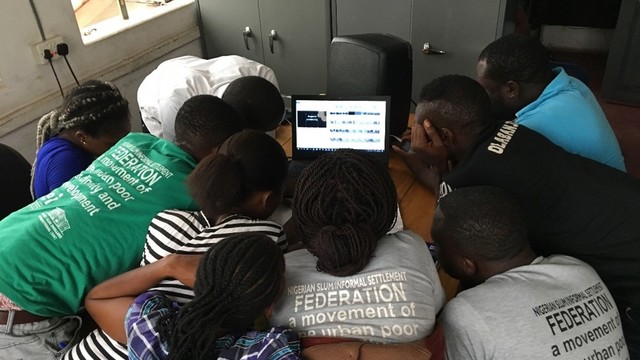CBA13: unlocking the power of technology to build climate resilience
Chris Henderson and Susan Nanduddu will lead the adaptation technology theme at this year’s community-based adaptation (CBA) event. In this Q&A, they give a taster of the issues participants will be tackling – and discuss the plan for taking forward emerging solutions.
 Adaptation technology will be one of the three themes at the 13th international conference on Community-Based Adaptation to Climate Change (CBA13) taking place on 1-4 April 2019 in Ethiopia. Under this theme, participants will examine how technology can build the resilience of communities hardest hit by climate change.
Adaptation technology will be one of the three themes at the 13th international conference on Community-Based Adaptation to Climate Change (CBA13) taking place on 1-4 April 2019 in Ethiopia. Under this theme, participants will examine how technology can build the resilience of communities hardest hit by climate change.
 In this interview, Chris Henderson (CH), senior policy and practice advisor in agriculture at Practical Action, and Susan Nanduddu (SN), director at the African Centre for Trade and Development based in Uganda, explain how the sessions will draw together participant experiences of technologies that are helping communities adapt.
In this interview, Chris Henderson (CH), senior policy and practice advisor in agriculture at Practical Action, and Susan Nanduddu (SN), director at the African Centre for Trade and Development based in Uganda, explain how the sessions will draw together participant experiences of technologies that are helping communities adapt.
Q: CBA13’s adaptation technology theme will explore how technology can build community resilience to climate change. Can you provide some examples of how technology is supporting communities as they try to adapt?
CH: Technology has the power to transform the lives of people grappling with the impacts of climate change. Mobile phones can provide up-to-date market information via SMS alerts to help farmers get the best price for their produce, and with easy phone access they can agree deals with buyers in advance.
Mobile phones can also deliver climate information in real time. With timely warnings of when adverse weather will hit, how much rain will fall or when the rainy season will start, farmers can protect and maximise yields by adjusting harvesting schedules or crop choices.
Another example is solar powered irrigation. This enables more reliable and productive cropping in arid or drought-prone areas. Renewable off-grid systems provide energy for milling, cooking, processing and refrigeration – all services that can help build the economies of remote rural communities.
These examples show that adaptation technology – whether existing or new technology – is all about implementation. It is the doing. The Paris Agreement commits countries to support the climate vulnerable to adapt. Technology is an enabler of these commitments; it brings tangible benefits to communities on the ground who need to respond now.
Q: At CBA13 we want to drill down into adaptation technologies that are working and understand why. What are the ingredients for adaptation technologies that really work?
SN: Adaptation technologies are only successful if they reach the communities whose lives and livelihoods are threatened by climate change. Technologies must be easy to access, they must be sustainable and there must be potential to scale up, modify or innovate further.
Conservation agriculture is one example here. These are soil management practices that minimise the disruption of the soil's structure, composition and natural biodiversity – retaining moisture and improving the soil’s ability to cope with drought or variable rainfall.
Since they can work with different crops, these practices are flexible and can respond to market demand. And they thrive using and building on the assets and skills farmers already have. At CBA13 we want to identify more examples like this and find ways to take them to scale.
Unless all these features are captured, adaptation technologies will not benefit those who most need them. If they are costly, risky or inaccessible they will bypass groups such as people in remote rural communities, risk adverse farmers, or marginalised groups including women and young people.
CH: Another crucial ingredient for success is developing technologies with a solid understanding of the local context. What might appear to be a great solution over the short term could have negative consequences in the long run, leading to ‘mal-adaptation’. For example, boreholes may help secure the water supply to farms. But if too many farmers use them and the water table drops in the long term, there can be ramifications for everyone.

Q: What sorts of things will you be looking for from CBA13 participants as you explore this theme together?
CH: We want participants to bring examples of technologies that are really helping their communities respond to climate change. And as well as asking what works, what doesn’t work and why, we’ll be tackling critical questions around scale and speed: we often see examples of technologies working well – but are there prospects for scaling up these solutions? And quickly? Time is not on the side of communities on the frontline of climate change.
SN: Solar-powered drip irrigation is a relevant case in point as farmers increasingly look for an irrigation solution to drought and unreliable productivity. Drip irrigation is a highly effective way of getting water and fertiliser directly to the roots of crops. It uses water very efficiently and minimises losses from evaporation – this is a crucial point as climate change increases the demand for water.
Solar-powered pumps also save hours of labour and remove the burden of water hauling by hand. But diesel-powered irrigation delivers large quantities of water, quickly, when needed and often cheaply because the technology is well known, reliable and easily accessible. So despite the many benefits of the solar-powered option, often dirty and polluting diesel and wasteful flood irrigation will win out.
CH: We’ll also tackle the big issue of finance. Local communities are not getting the money they need for technologies that will help them adapt. Investors need to know the returns on their investment and where the risks are.
A big part of leveraging support will be about demonstrating what works financially as well as technically and socially. So, we will be working together on the practicalities of getting finance to flow to these technologies. What are the funding options? Public or private finance? Or a mixture of both?
Q: What are the barriers to attracting money to adaptation technology?
SN: One issue lying behind the finance challenge is how well adaptation technologies are understood. We need much greater clarity around what adaptation technologies are. People carry out practices to adapt to climate change but often do not recognise these as adaptation.
Take the case of adopting improved seed varieties – drought-resistant seeds, for example. If farmers can produce maize out of season – and attract good prices for it – they may be able to afford to pay for seeds during the following season.
Conservation agriculture is an adaptation practice but is seen by many as good practice or good development. In order to boost the uptake of such technologies they need to be recognised as adaptation and the focus of climate, as well as development, policy.
This can include indirect support by governments through helping adaptation technologies meet market standards (such as appropriate quality assurance and certification of organic fertilisers), or that farmers receive the needed advice and training (such as through relevant curriculums for the training of agricultural extension workers).
Q: What the big issues with engaging the private sector?
CH: Before investing, the private sector needs examples of what works. We see investments in technologies that mitigate climate change impacts increasing; they continue to attract the lion’s share of climate finance. But since adaptation technologies aren’t well recognised or analysed, it’s harder to make the case for financing them.
We need more evidence of investment-ready adaptation technologies that work. And we need to share these far and wide, in different platforms and places, from the local to global level.
SN: It’s also important to know which private sector players are best placed to deliver adaptation technologies. Multi-lateral entities may have capacity to invest – but in practice they show little interest in adaptation. Small and medium enterprises (SMEs) on the other hand have great potential to deliver adaptation technologies and are showing increasing interest in developing new tools, applications and products. And SMEs are in touch with local problems and have first-hand experience of how climate change impacts their value chains – especially agri-businesses.
But they often lack technical and financial skills, limiting their access to finance. So, SMEs need examples of adaptation technologies that work, where technical and financial needs are in place and there are proven options for scaling up.
Q: How has the dialogue on adaptation technology progressed since CBA12? Where were we then, and where are we now?
CH: Last year we identified adaptation technologies that can excite and motivate policymakers and investors. This year we want to better understand those technologies with a particular focus on:
- Gender – seeking to close the adaptation technology gender gap by developing technologies that are gender responsive
- Upscaling technologies – in terms of increasing access and adoption – and seeking ways to work with the private sector
- Tackling tensions and competition between existing and new technologies – such as between making use of the diversity of existing crops and animals and of new varieties and breeds.
We also want to work better as a community by joining up and deepening the value of work with CBA13’s two other themes – climate finance and policy engagement.

Q: What do you want to see come out of the adaptation technology theme at CBA13?
SN: We’ll be setting out a plan for spreading the word on what we’re learning. This plan will span local to global. At local level, practitioners from NGOs and SMEs will learn from each other about adaptation technologies that are effective – to either validate what they are working on or encourage increased private sector investments at community level.
Local governments play a critical role here – in building knowledge, providing extension services, but also attracting community level investment.
At the national level we will engage relevant government departments, encouraging them to show how adaptation technologies can help deliver the targets set out in nationally determined contributions. We will discuss how we can better engage in the annual planning cycle of national governments, pushing for budgets to include investments in adaptation technologies.
At the international level we will promote insights from CBA13 at the Global Commission on Adaptation and UN secretary-general’s climate summit in September. What we learn will also feed directly into the Least Developed Countries (LDC) Initiative for Effective Adaptation and Resilience (LIFE-AR) – a project that will develop the LDCs’ vision for a climate resilient future by 2050.
We will also plan for ways to feed our ideas, experience and learning into the various processes and bodies of the UNFCCC – this includes the Technology Executive Committee (TEC), the Advisory Board to the Climate Technology Centre and Network (CTCN), the Global Environment Facility (GEF) as well as the UN climate negotiations themselves.
The sessions are going to be highly interactive: we know that experiences, ideas and innovations from the ground are the bedrock to solutions that work. We are ready to build evidence and inspire action on adaptation technology. Join us in Addis Ababa!
This interview was compiled by Teresa Corcoran, communications content officer in IIED's Communications Group.



